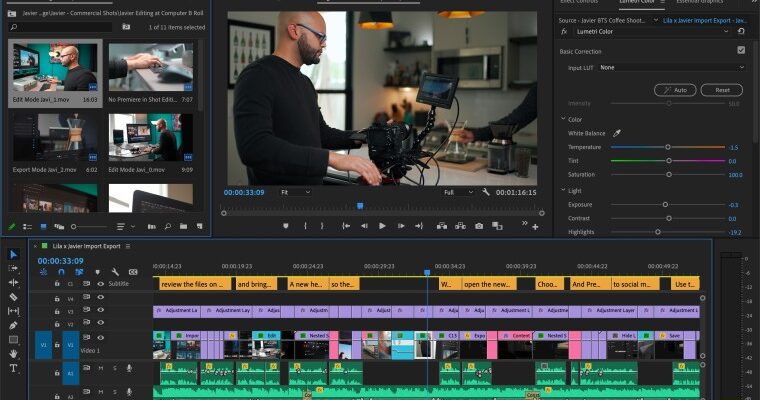Adobe Premiere Pro has long been a cornerstone for video editing professionals and enthusiasts alike. With its robust features and seamless integration into the Adobe Creative Cloud ecosystem, it continues to attract users seeking a comprehensive editing tool. However, while its capabilities are impressive, the software is not without its flaw, providing a nuanced perspective for potential users.
By Ropafadzo Mashawi
Pros
One of the standout aspects of Premiere Pro is its extensive feature set. The software supports a wide range of formats, making it versatile for different types of media projects. For instance, whether you’re working with 4K footage or lower-resolution videos, Premiere Pro handles it all with ease. The timeline is intuitive, which allows for efficient editing through drag-and-drop functionality and the ability to nest sequences. This is a huge plus for complex projects.
Moreover, Premiere Pro shines in its color grading and correction capabilities. With tools like Lumetri Color, users can achieve professional-grade color adjustments that enhance the visual storytelling of their projects. In addition, the software provides a variety of effects and transitions, enabling editors to add creative flair to their videos effortlessly.
Furthermore, Premiere Pro’s integration with other Adobe applications, such as After Effects and Audition, makes it a powerful hub for any video production workflow. Users can seamlessly transfer projects, assets, and even effects between these applications, which streamlines the editing process.
Cons
However, while Premiere Pro offers advanced features, the user experience can be a double-edged sword. For beginners, the sheer volume of tools and options can be overwhelming. Consequently, the learning curve is steep, and it may take significant time and effort to fully grasp the software’s capabilities. Although Adobe provides tutorials and resources, they can sometimes be insufficient for new users looking for quick guidance.
In addition to this, the interface, while customizable, can feel cluttered. Navigating through the myriad of panels and options may frustrate those who prefer a more straightforward approach. As a result, this complexity can detract from the editing experience, especially for those working on tight deadlines.
When it comes to performance, Premiere Pro has garnered mixed reviews. While the software is generally stable, users have reported occasional crashes and slowdowns, particularly when working with large projects or high-resolution footage. Indeed, these issues can be detrimental, leading to lost work and wasted time. Despite Adobe’s frequent updates aimed at improving performance, the software can still be resource-intensive, necessitating a powerful computer to run smoothly.
Moreover, the subscription model of Adobe Creative Cloud can be a point of contention for many users. Although it provides access to the latest features and updates, the ongoing cost can add up, especially for hobbyists or those who do not use the software frequently.
In conclusion, Adobe Premiere Pro remains a leading choice for video editing, boasting an impressive array of features that cater to both professionals and enthusiasts. Its powerful editing tools, color grading capabilities, and seamless integration with other Adobe applications make it a formidable option for anyone serious about video production.
Nevertheless, the software’s complexity, performance issues, and subscription model are significant drawbacks that potential users should consider. Therefore, for those willing to invest the time to learn and adapt, Premiere Pro can be an invaluable asset in the world of video editing. Yet, newcomers or casual users may find themselves better served by simpler alternatives that offer a more intuitive experience.
Ultimately, Adobe Premiere Pro is a powerhouse of a video editing tool, but it comes with its own set of challenges. It’s a platform that rewards dedication and skill, making it a worthy investment for those committed to mastering the art of video editing.















Comments